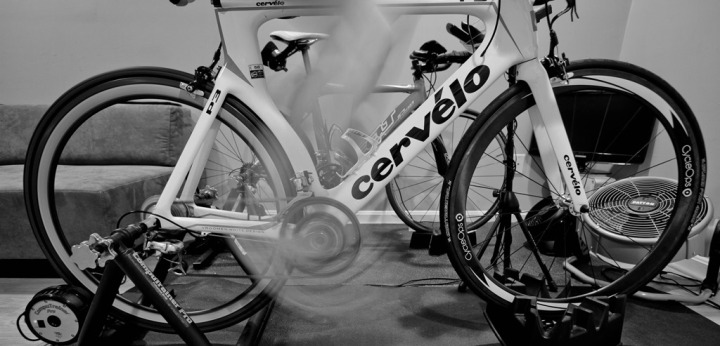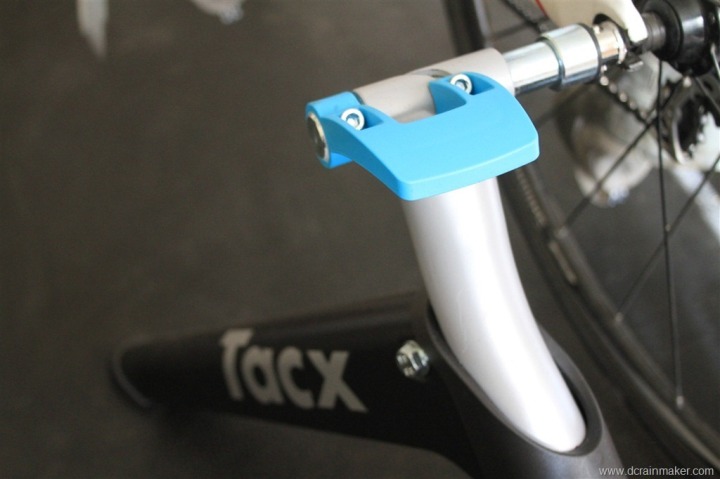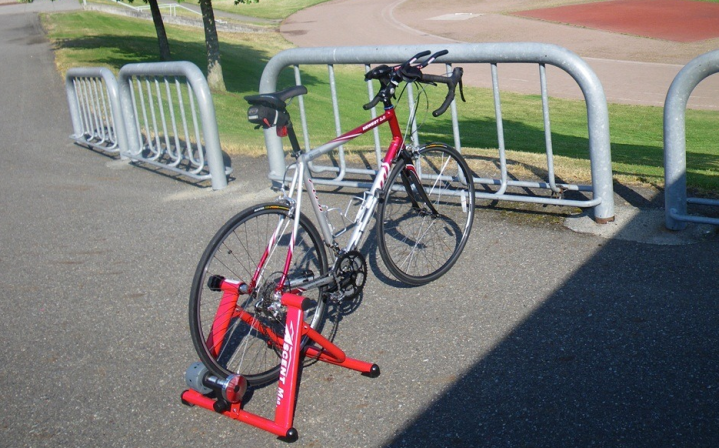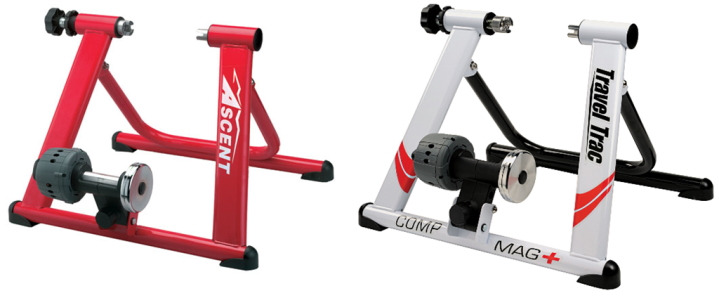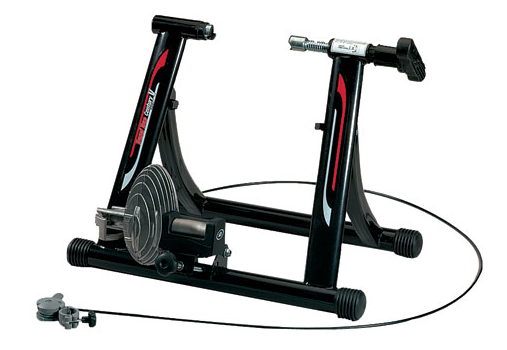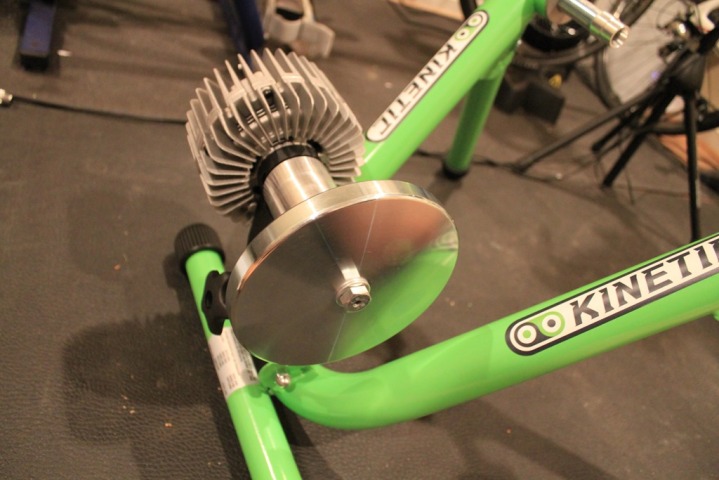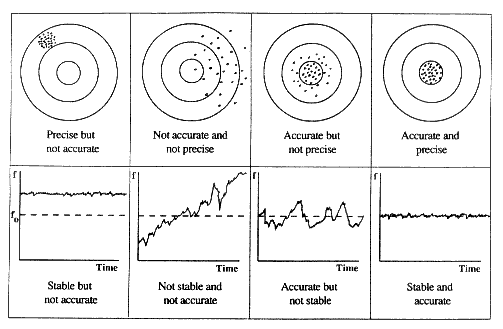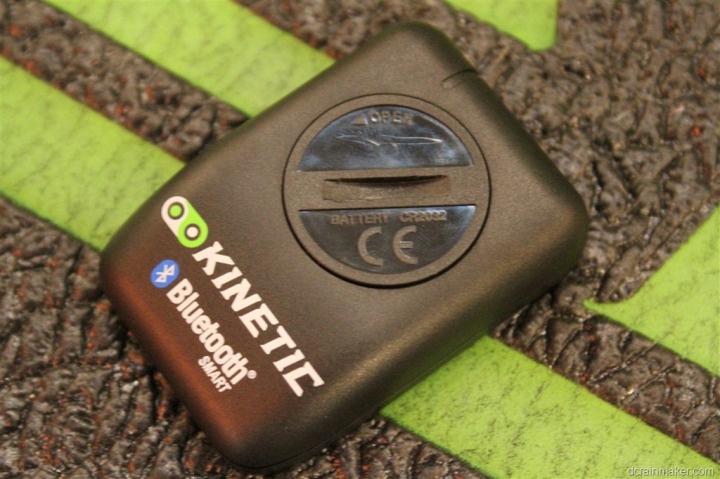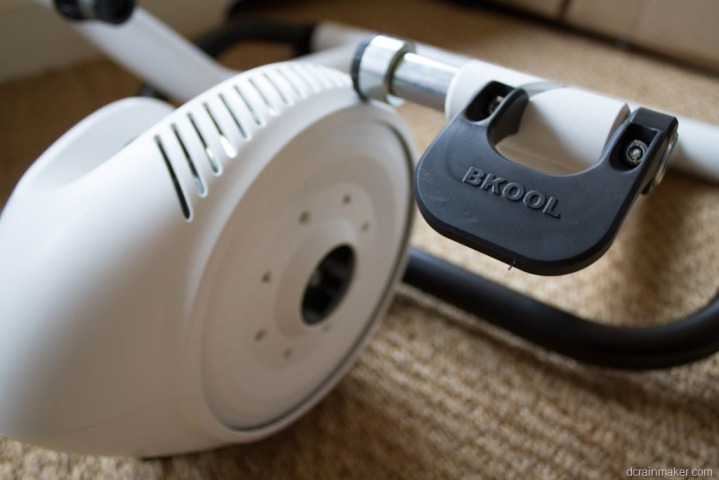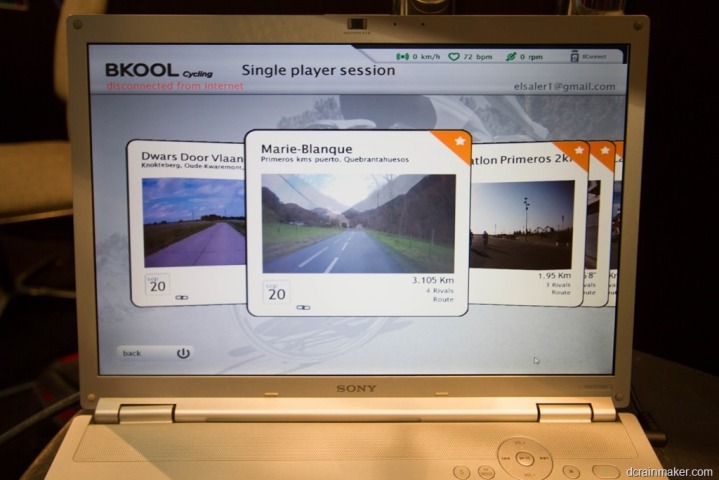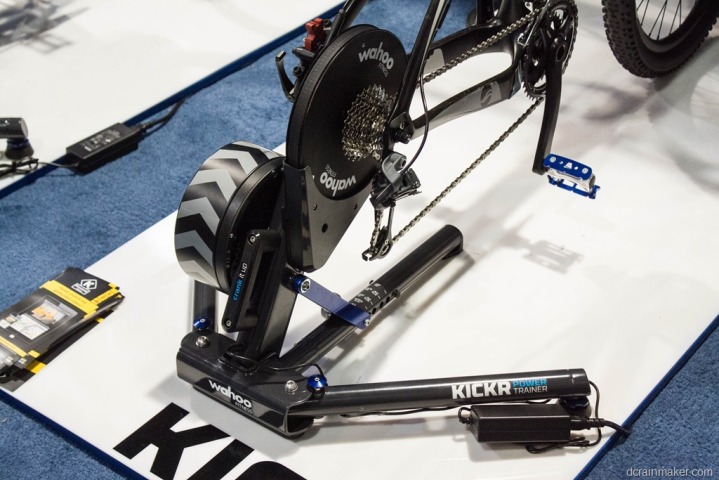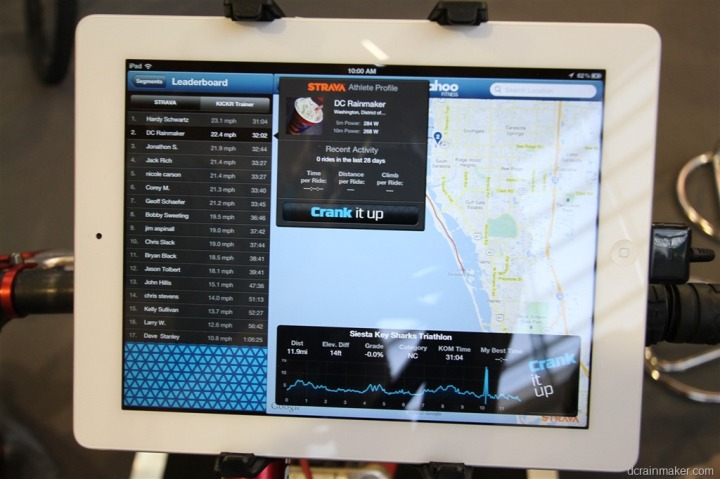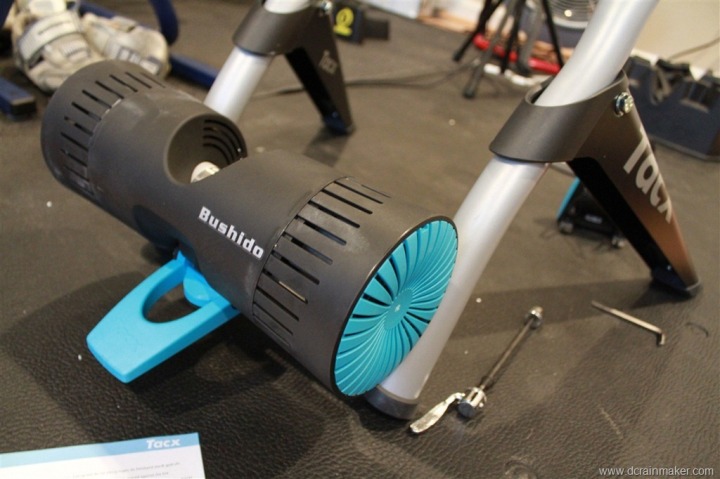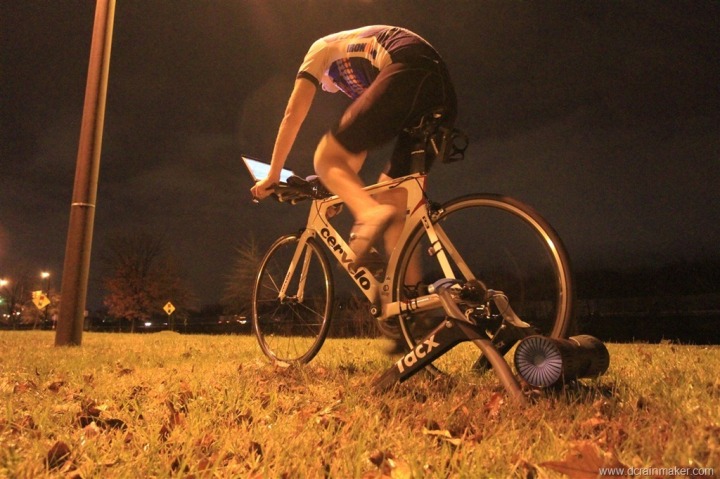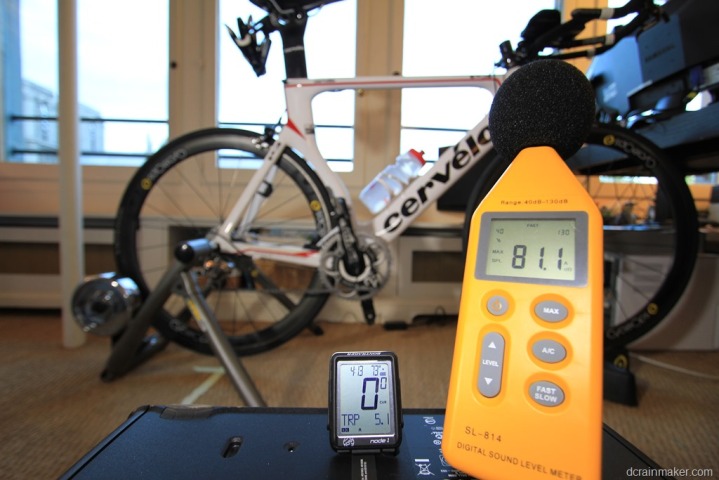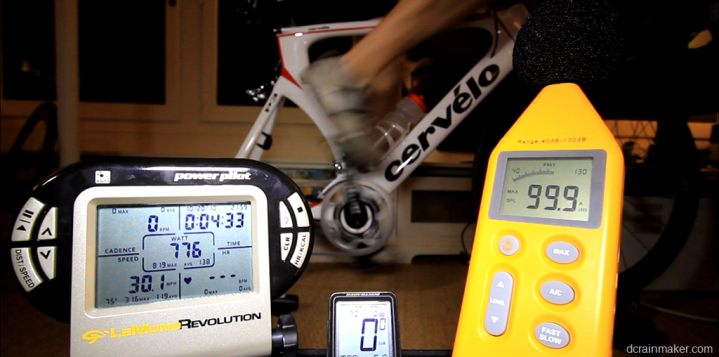[Just as a head up: My 2013 recommendations can be found here]
In time for the winter season (northern hemisphere), or the bulk of the southern hemisphere training season – I’ve got my full list of trainer recommendations. Before you dig into my specific recommendations, spend a moment to understand how I got to these conclusions and why I selected the models I did.
How I made my recommendations:
First and foremost, I only recommend trainers I’ve actually used. There are undoubtedly many other good trainers, great trainers even – especially in the sub-$400 range out there. But, even with some 6-8 trainers currently in my possession, I simply can’t try out every one on the market today with any reasonable level of detail or authority.
Some of the trainers below have just come on the market (or are about to), and thus, I haven’t had as much time trying them out as I normally would. Due to this, I’m branding this the ‘Early Edition’. I asked you all last week if you wanted me to wait until I’ve had more time with some of them, and you all said you’d prefer to get the recommendations now, and more detail later. Ask and you shall receive!
When I look at recommendations across all products I make, I try and recommend products to you in the same way that I’d do to friends and family. I keep it simple and explain exactly why I feel a given way. The new entrants into this market over the last 60 days have fundamentally shifted the upper range of this market considerably. And this isn’t just my opinion. I see and hear this near daily within industry discussions, but also simply on forums, sites and elsewhere.
I defined the price ranges to align a bit to how the products are priced competitively. For example, if I had made the price range $500-$1,000, and then an additional $1,000+ range, it would have grouped together the $550 LeMond Fitness Revolution with the $999 Wahoo KICKR. Which wouldn’t have take into account that realistically the $999 KICKR competes very easily with $1,500 trainers. So, I arranged them based on how they best fit against each other. Ultimately, you can cross-compare categories if you’d like, but I think these ranges align fairly well to your price requests.
And finally, note that I tend to focus on trainers that have some element of technology in them. It’s not that I think that all non-technology trainers are the same (cause they aren’t…well…except that most are), but it’s because that’s just what I happen to review the most here.
General things to look at in a trainer:
There’s a lot of things to look for in a trainer – but some are applicable across the board from a sub-$100 unit to a $1,500 unit.
First and foremost, it needs to be sturdy. The more plastic involved, the less likely it’s going to last over time. Take for example, the CompuTrainer, otherwise known as the rock. A tank really. I’m certain I could throw that in front of a semi-truck, and it’d probably be fine. As such, those units last 10-15 years (or more). In fact, I don’t know anyone who’s ever broken a CompuTrainer frame. Some electrical components eventually wear out, but the frame is astoundingly sturdy.
Second, look at the attach point to your bike. I’ll start with the ones that leverage a skewer of some sort and don’t require removal of the wheel. In these cases, try to find one that has a ‘quick-release’ mechanism for quickly locking the trainer into place. One that doesn’t require you to endlessly spin the tightening lever and try to find an exact spot each time. See below for an example of a quick lever:
In the case of trainers that you attach your bike directly into a cassette mounted on the trainer (LeMond/KICKR), be sure that it’ll be compatible with the existing setup you have. There are only a few edge cases where this occurs (primarily higher end), but just be aware of them.
Third, look at how stable the platform is. The smaller the base of the trainer, the more likely it is to tip over (and you along with it). And while tipovers are extremely rare – they are a problem on lower end trainers ($50-$150). This can be further compounded when the trainer mounts the wheel higher up – meaning a higher center of gravity. It’s not hard to get a situation where you try and reach for a TV remote control or something off to the side and fall over. None of the trainers I’m recommending have this issue, but in general, keep it in mind.
Sub-$200 Price Range:
I’m going to start with the cheapest trainer I know of…and ironically, the first trainer I ever owned. Yet, it’s still the one I’d recommend to folks on a tight budget.
Little Red (aka: Performance Ascent Trainer aka Performance Travel Trac Comp Mag + Trainer) – $99:
As noted, this was the first trainer I bought in DC, and, it’s actually still a trainer I have at my parents house in Seattle. For the vast majority of basic use cases, it works quite well. The trainer can be found only at Performance Bike (big bike superstore in the US) for generally $80-$100. If it’s not on sale this week, it will be next week (a rule of thumb at Performance Bike for everything).
It does not have adjustable resistance, instead, you adjust your gearing to increase resistant. Further, I found that it maxes out at about 300 watts. For most riders, that’s not a terribly big issue. If you aren’t sure if you can output 300 watts, I’d wager a bet that you can’t. Folks that can output 300w tend to know it. I ran into issues where during certain interval sessions, I’d effectively hit the ceiling on resistance of the unit at around 280-300w.. But for steady state workouts and everything other than those top-end workouts, it works great. Plus, it’s tiny and lightweight. Here you can see me using it outdoors:
Now, it used to be called the “Ascent”, but best I can tell, the “Travel Trac” is simply the new Ascent. Everything looks identical on it, just a new paint job. By the way, this is the Performance Bike house brand, so you won’t find it anywhere else. Performance bike likes to rebrand trainers all the time for reasons that defy logic. Same trainer, new name.
Like I said – same thing from what I can tell beyond a new coat of paint, and definitely the best low-budget option.
Performance Bike Travel Trac Century V Fluid Plus (~$150):
Next up is a slightly more expensive model from them that offers controllable resistance. It’s fairly basic otherwise like Little Red, but you can use the resistance control cable and lever that specifies resistance from your front handlebar. You simply wrap the cable around such that you don’t get it caught in your bike, and you’re good to go!
I used this quite often in brick workouts in DC at the track. As well as before sprint triathlons and the like. It doesn’t require any plug-in or anything, and is easy to transport.
Unlike the $99 Ascent, this one can easily handle over 300w during workouts, so there were no issues for any of my higher interval workouts. I don’t have any good individual photos of it that I can find from my stockpile, and I gave it to my neighbor before the move – but it’s still a great little trainer.
I often took this with me travelling when going by car, because it easily fit in the trunk. For example, here I took it to a ski area in West Virginia and did my workout there.
The primary reason you’d buy this trainer over the cheaper one is the resistance control (which you’d otherwise do simply by shifting gears), or because you need higher wattage resistance. That said, it seems to be missing of of Performance Bike’s site right now – so perhaps it’ll show up again. They like to constantly re-brand/re-label their trainers.
$200-$500 Price Range:
In this price range, I only have experience with a single unit, thus, it’s all I’m going to recommend. But, even if I did have experience with other units, I’d probably still recommend this – read on to find out why.
Kinetic Kurt Road Machine – $330US:
This is an interesting trainer for a few different reasons. First, is that it’s well built. Second, is that it’s fairly stable within the power curve, and thus works well for predicting power through various apps and accessories.
And in my mind, the ONLY reason you’d pay $330 over one of the cheaper options is because you want to integrate it with a platform that provides power estimation. In this case, Trainer Road (there are others though). They’re an online platform (with a client software that gets installed) that has workouts and integration via ANT+ to your existing devices. Grab your bike with an ANT+ speed/cadence sensor, stick it on a trainer, and then it’ll record the whole thing.
So why does this matter for the Kurt Road Machine? Well, Trainer Road supports a concept called Virtual Power, which means that they have a known resistance curve of a given trainer (many trainers actually, listed at that link), and can then semi-reliably predict power. By semi-reliably I meant that they can generally be fairly precise, but not fairly accurate. In other words, session to session you’d get consistent numbers – but those numbers may not map to the correct wattages if measured using a direct force power meter.
(Above: Trainer Road would fit into the leftmost box, while a conventional direct force power meter would generally fit into the rightmost box. Btw, I can’t remember where I saved this chart from months ago – but I believe it was Tom A. (power meter guru). So thanks Tom! And, if it wasn’t you Tom, thanks and sorry to whomever it was!)
Take for example a rider that’s riding at a reliably measured 200w output. In this case, with a PowerTap (direct force power meter) he may show 200w day in and day out. But with Virtual Power, he may show 220w day in and day out. The key is, he’s showing the same thing each day (assuming he’s outputting the same thing of course, just an example).
Now there’s a TON of debate out there as to whether power numbers matter as long as they are consistent. I’m going to stay out of that debate. Ultimately, number accuracy only matters if you change cycling power meter measurement devices (i.e. go from Trainer Road VP to a Power Tap). For many people, over the course of their riding career, they will likely do that. Thus, ensuring accuracy over time is important for those people.
For the purpose of being within the confines of Trainer Road and Virtual Power, it’s not terribly important. But again, it’s up to you to determine how applicable that is to you and your use cases.
At any rate, back to the Kurt Kinetic Road Machine. This is the trainer that the Trainer Road guys recommend as their best balance between reliability and cost. And thus, it’s the one I picked up. And therefor, after playing with it – it meets all of my standards defined earlier on in terms of reliability/stability/etc…
I will say however, that if you don’t plan to use Trainer Road or a similar service, then honestly I wouldn’t spend the extra cash.
However – here’s where it gets interesting. It’s also one of a few trainers that supports the Kinetic inRIDE Bluetooth Smart accessory. This accessory allows the trainer to transmit power information (including roll-down information for calibration) to Bluetooth 4.0 compliant devices, like the iPhone 4s/5 (and iPad 3 aka ‘New iPad’). It can also transmit to Trainer Road over Bluetooth Smart (BTLE) as well). Expect to see other apps support it as well over the next 3-9 months.
Ultimately, this is an interesting way of getting power information that should be more reliable than Virtual Power (because of the roll down piece) to your computer or phone for recording.
Now, this additional accessory costs about $200 – a wee bit high in my opinion. Though, it does include a Bluetooth Smart HR strap in it. I’ve got one of these on the way to me (shipped out a couple days ago), and will get some more time with it shortly.
$500-$800 Price Range:
This is a bit of an odd price point for trainers, as there aren’t actually too many options once you leave the low hundreds, before you hit closer to a thousand dollars. But, this trainer does fit the bill.
BKOOL Trainer (Euro folks only!) – €500:
I had a chance to play with the BKOOL trainer back at Interbike, and one arrived on my doorstep about a week ago. I’m pretty excited about the potential here with this unit. The BKOOL trainer is about half the price of most other rivals on the market with similar capabilities. Its core feature set allow you to ride courses, routes and against competitors (both in real-time and in stacked rankings separately). The package isn’t quite as polished when it comes to user interface in the software app, but once you’re in a course video that doesn’t matter too much as the video quality itself is great.
And while it does estimate power, it’s just that – a bit of an estimation. Because there is no roll-down procedure, there’s an element of trust in that you have your tire at the exact correct pressure and that the unit is correctly setup such that the power numbers are accurate. I haven’t had the chance yet to do any power meter metric comparisons on it, but that’s on the near term radar. In my mind though, for the price (€500), this is primarily an entertainment and ‘make the time go by’ tool rather than one to use specifically for power training. It’s still a great tool for general training on a trainer though, no doubt about that. It’s just that if you’re relying on the power number, you’ll want to be wary of that number specifically. Everything else is solid.
Additionally, I love the fact that the video (course) library is a Netflix streaming style model – all you can eat for $10 a month. So much better than other companies charging $100 per video. Because really, how often can you ride the same course over and over again?
Now the only catch here is that the trainer is currently only offered in Europe – but since they were at Interbike last month they are fishing for a US distributor. Hopefully that shakes out for them.
Note: I had originally planned on putting the LeMond revolution into this category (albeit with some caveats). However, given recent information (see Q&A below), I have removed it from my recommendations.
$800+ Price Range:
This price range is where things get really interesting…
If you had asked me prior to Eurobike what my recommendations were, they’d be vastly different than today. But, it’s no longer August, and thus the game has shifted. Specifically, the price and features have shifted. The introduction of the Wahoo Fitness KICKR has fundamentally changed this game. And I know you hear me mention it a lot – but it’s because it’s changed so much in this segment. It dropped the price of a resistance controlled trainer from $1,500+ (lower cost Tacx Bushido aside) to sub-$1,000. It added the ability for anyone to develop apps against it on any platform (iPhone/iPad/Android/Windows/Mac/even Linux). And it added both open ANT+ and Bluetooth Smart (no other trainer had/has that, as Tacx was used closed ANT+, and only does one-way ANT+ for the open piece).
Thus, if you’re spending anywhere in this range….
Wahoo Fitness KICKR – $999:
Now, here’s the bad news. The KICKR isn’t quite available today. Not till just into January (pre-orders starting sometime between Thanksgiving and Christmas, with deliver ~30 days from pre-order opening date). But time delays aside, if you were to buy a trainer in this general price range, it’s what I’d recommend.
That said – if you can hold out till post-Christmas (perhaps pickup one of those $99 trainers in the meantime) – this is the trainer to have. It’s effectively future proofed by supporting both ANT+ and Bluetooth Smart, meaning it can connect to your existing ANT+ devices and broadcast power meter metrics (for example, to a Garmin FR310XT or Timex Global Trainer), as well as do the same directly to Bluetooth Smart compatibility devices. For example, down the road I’d expect Polar to release a Bluetooth Smart compatible watch that can take Bluetooth Smart power meter inputs – it would connect to that too (assuming Polar followed the standards, but I’m certain they will since they chair that portion of the BT SIG board). In fact, just yesterday Polar released a Bluetooth Smart phone app, though today it only supports the Bluetooth Smart HR unit…but I’d have to assume expandability is on the radar.
Next, it’s an open platform. We’ve got apps like the Strava demo app that allows you to ride any Strava segment on earth and compete against it (though, today, it won’t allow you to post your results from the trainer). You can read and see that in action at this link in the videos. But any other companies can develop apps against it. For example, Training Peaks could develop an app to automatically transfer workouts that coaches specify straight to it. Possibilities are endless. No more being restricted to buggy or old software that comes with most trainers these days.
Ultimately, the product still has to come out (on time), and it still has to be bug free. But just waiting for it (and my review) won’t likely hurt you. Which, is how I look at it.
Tacx Bushido Trainer – $900-$1,000:
While the KICKR isn’t available today, the Tacx Bushido is – and it’s a good little trainer with a full computerized offering. The Bushido also has some specific advantages over the KICKR. First is that it requires no wires (the KICKR will offer a car adapter though), so you can take it anywhere and ride anywhere. Plus, with no wires, it’s generally cleaner to setup.
Second, the Bushido offers a far bigger video riding library than the KICKR appears staged to at start. Since the KICKR is dependent on 3rd party apps, it might be a bit of time until we see that really expanded out (through folks like Kinomap). They’ve also got a good collection of folks already using the platform, which means that there’s more folks to ride with in multiplayer scenarios and the sort.
Third, the Bushido doesn’t require taking off your back wheel (like the KICKR). For some, that’s a pain in the butt.
And of course, they do all the usual stuff like allowing you to create workouts, ride in a virtual earth setup, and record your data and publish it to various services via standardized file formats.
Overall, the Tacx is a solid trainer if you’re in need of a trainer today. And their upcoming iPad app should add to the portfolio as well.
Trainer Q&A:
What about trainer tires?
I commented on trainer tires a while back in a Weekly Mailbag post, so here’s what I said then – which still applies today.
I train everyday on the stock wheels and tires that came with the bike. Just normal tires and normal wheels. In fact, I don’t even bother to swap out for a separate trainer tire. Why? Well, my thinking is that I spend 3+ days a week on a trainer, and the last thing I want to deal with is swapping tires or wheels every time I go inside to outside or the inverse (I’m kinda lazy that way). Further, when you step back and look at the total cost of triathlon or cycling, and the total cost of simply getting a new tire each each due to wear – the new tire is pretty low (between $30-45).
Now, if you’re riding race wheels with expensive race tires – you’ll have to balance the much higher cost of most race tires.
Why didn’t you recommend XYZ trainer or software instead? It’s way better!
As noted above, it’s likely because I haven’t used it. I’m pretty strict in that I don’t recommend things I haven’t used or know a lot about. I know magazines love to, but I don’t. Sorry!
Why aren’t you recommending the CompuTrainer? And what about RacerMate One?
I’ve bought two CompuTrainers myself, and still use them. But at this point, I can’t justify recommending the purchase of a full-price CompuTrainer to anyone. Perhaps used at a solid discount, but not full price. Ultimately, I feel their Racermate One software isn’t competitive in the market place today, nor what’s coming down the road with 3rd party apps for platforms like KICKR. At $1,640US, it’s the most expensive consumer trainer out there, yet aside from Spinscan, has less functionality and features than everything else. And Spinscan really isn’t super-useful for the majority of folks (I do understand a small number of folks like it of course).
What about the LeMond Revolution Trainer?
LeMond Fitness sold their business to Hoist Fitness about two weeks ago. Since then I’ve been on a bit of a path to figure out what’s going on with the Revolution Trainer – which got quite a bit of attention last year for its realistic feel.
Well, I made a lot of phone calls today. First, starting with my usual LeMond Fitness PR contact. No longer there. Then to a known engineering contact at LeMond Fitness – also, now gone. Then, since their website said to “Call for Availability” for the Revolution Trainer, I did that. Turns out that put me in touch with the Hoist folks. The Hoist person that answered the phone explained that the Revolution Trainer wasn’t part of the sale deal, and that she’d take my number and down the road they’d call back once things were cleared up.
So now I dig around and find an old PBX number in an e-mail years old for LeMond Fitness, where a person answers (woot!). Except, she’s never heard of the Revolution Trainer (having been to their relatively small building, I’m somewhat boggled by this). I explain that’s a bit odd and is there anyone else she can ask. She puts me on hold and asks around and clarifies that Hoist now owns that piece as well. She was helpful though, in that she explained only about 2-3 people are left at LeMond to effectively clean things up, and everyone else was let go and is gone. But, she gave me the name of the marketing person at Hoist to call.
So, back to Hoist I go, this time asking for the marketing person – who was quite knowledgeable. Turns out the initial Hoist person was mostly correct. Hoist technically bought the Revolution as part of the larger LeMond deal, but has no plans to offer it for sale. Instead, they’re looking to sell the product line back to Greg LeMond. What Greg does with it is anyone’s guess. I’d wager sell it to another company.
But, in the meantime, you can’t order one, nor is there any clarity on when you’d be able to order one, or from who. Further, the development team has been disbanded, so there’s no likelihood of continued product enhancements there. Even if a full team was magically stood up tomorrow, the soonest I’d expect anything new would be Interbike 2013 at best, but again, it doesn’t sound like it’s anywhere near that point. Hoist will help you out if you broke something on your current trainer, but beyond that – their hands are tied.
Which, brings me back to why there’s no way I’d recommend it at this point.
What about the CycleOps PowerBeam Pro:
CycleOps is in a tough spot right now. On one hand, they were/are competitive with the likes of the CompuTrainer (high end), in that they have a resistance controllable unit that’s durable and does exactly what it says it’s going to do. And, they’ve just released their new software suite to go with it (which is actually pretty solid). However, the price is what’s hurting them. They’re just too expensive compared to KICKR, and without as much openness or integration as the KICKR.
I have no problems with the product (full review here) – it’s just that price-wise it’s a tough recommendation in today’s marketplace.
Any tips or suggestions on where to place remote controls/jelly beans/bike computers/etc while on a trainer?
Yup, you’re in luck. I’d recommend either a simple 4-cup OXO measuring cup (silly, I know, but clips onto almost all road bike bars and triathlon bike aerobars – awesome). Or, you can build your own like I did here in this post.
Do you use a trainer pad/mat (floor protector)?
Yup, it’s just a generic ones I picked up at Performance Bike way back when. You can find endless numbers of them online or at your local bike shop – usually around $30. You can also just use a towel, just be sure that if you’re on carpet that you change the towel regularly, otherwise it’ll eventually stain the carpet below (sweat going down into it). Here’s the thing, don’t overspend on this – that’s silly. You don’t need a $70 trainer mat. As long as it’s waterproof (thus, sweatproof) and offers some padding to lower sound profiles, that’s really the key thing.
What’s the quietest trainer?
So I did a lot of testing on this a few weeks ago. Each trainer, multiple iterations, videos, differing speeds (which is what control sound levels on trainers, not resistance/wattage) – and did them all in front of a decibel meter (measures sound). I think I did them for three hours in total. I suspect my poor neighbors below thought civil war had broken out above their heads.
But here’s the thing: They’re all within about 1db of each other at their peaks (and about the same across the rest of the profile). Well, except the LeMond Revolution – which was 20db higher and topped out at 100db, which is literally the same as a jet engine. No joke. Of course, everyone knows it sounds like a jet engine – but this literally proved it.
What about one of those bike protective thong cover things?
No, sorry, I don’t cover up my bike. I’ve spent a A LOT of time on my bike, pouring a lot of sweat – many multi-hour rides. But you know what? I’ve never seen any adverse issues due to it. Perhaps I’m lucky, perhaps it’s not normal. Either way, I don’t use one.
Overall Summary:
In general, for US folks, I see three trainers to choose from. At the low end, there’s a plethora of options – in my case, I prefer the simple and basic Performance Bike trainers (who can beat $99)? At the mid-range, you’ve got the Kurt Kinetic Road Machine (and optional power meter accessory). And at the high end, you’ve got the Wahoo Fitness KICKR. For the European folks, you’ve also got the BKOOL in there mixing it up in the mid-range trainer arena.
I’m not a big fan of buying into technology that I see as declining or otherwise sliding backwards – whether that be because the company isn’t innovating or simply because they don’t appear to be there anymore. Further, I’m not a big fan of overpaying either (for brand or otherwise). Hence why I’d rather pay $1,000 for a trainer than $1,600 for a trainer with a different brand.
Ultimately you’re not going to go wrong with any of the trainers I’ve recommended here. Nor, with most of the trainers I’ve reviewed previously. For example, if you find a CompuTrainer on eBay for $500 – absolutely, that’s a good deal – grab it and use it for the resistance/wattage control and measurement tool that it and has been. For $1,000? No.
As always, if you have any questions, feel free to drop them below. Thanks for reading!
Various links to pickup trainers:
At this point, most of the trainers I’ve listed above aren’t offered through platforms that help support the site (Amazon/Clever). No worries though, here’s where you can pick them up.
Performance Bike $99 Trainer: On PerformanceBike.com (again, wait for a sale)
Performance Bike $150 Trainer: Seems gone from Performance Bike currently (it’s likely to show up again)
Kurt Kinetic Road Machine – $329: On Amazon.com and CleverTraining.com
Kurt Kinetic inRIDE accessory – $200: Not yet available for order, will be on Amazon and CleverTraining.com and Wahoo’s site.
BKOOL Trainer – €500: On BKOOL.com in their product store (Euro folks only)
Wahoo Fitness KICKR – $999: Not yet available for order, will be available through Clever Training though as well as on Wahoo’s site. Unclear on Amazon.com.
Tacx Bushido Trainer –~$950-$1,100: On Amazon.com and CleverTraining.com
As always, anything bought through CleverTraining.com via the links above gets you a flat-rate 10% off (all products/brands) when you put in coupon code DCR10BTF (must use link & coupon code) as it’s exclusive to readers here. Amazon through the links above supports the site, but no discount for ya.
Thanks for the support!
FOUND THIS POST USEFUL? SUPPORT THE SITE!
Hopefully, you found this post useful. The website is really a labor of love, so please consider becoming a DC RAINMAKER Supporter. This gets you an ad-free experience, and access to our (mostly) bi-monthly behind-the-scenes video series of “Shed Talkin’”.
Support DCRainMaker - Shop on Amazon
Otherwise, perhaps consider using the below link if shopping on Amazon. As an Amazon Associate, I earn from qualifying purchases. It doesn’t cost you anything extra, but your purchases help support this website a lot. It could simply be buying toilet paper, or this pizza oven we use and love.

